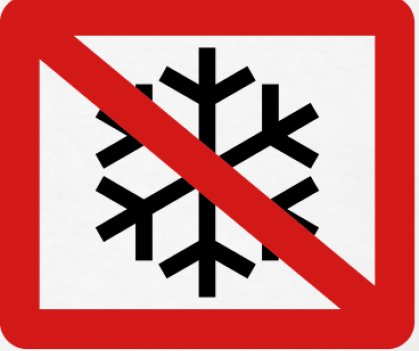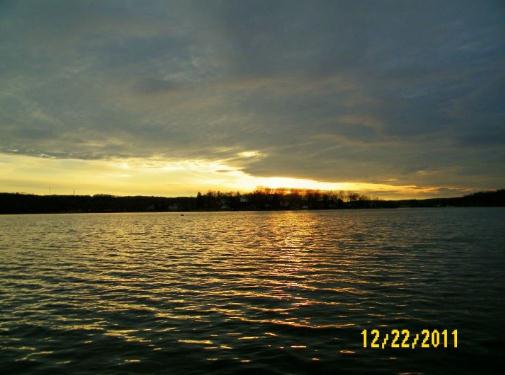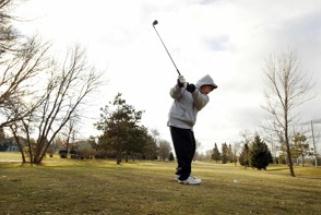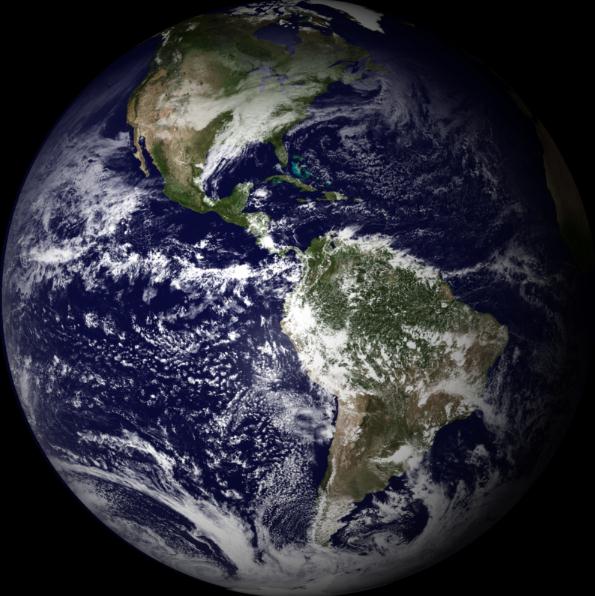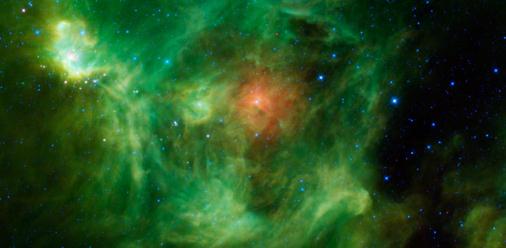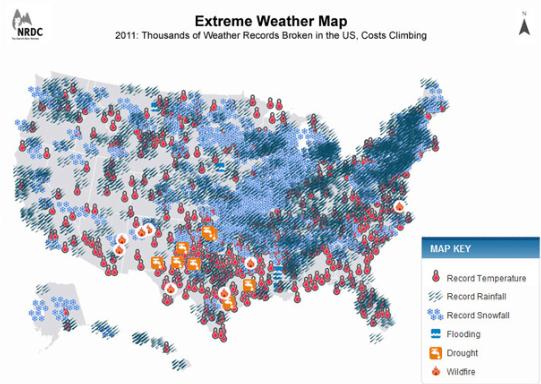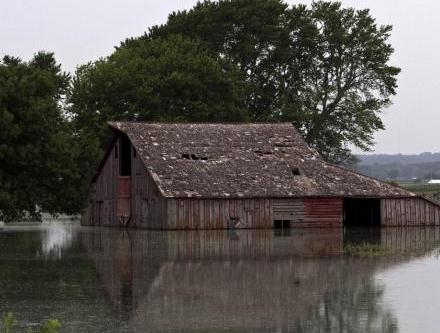
"
Christmas is a time when you get homesick - even when you're home." - Carol Nelson

"
The trends have resulted in the least snow New England has seen in November and December since the late 1990s, said Eric Evenson, a weather service meteorologist in Burlington, Vt." - from a Washington Post article below on the lack of snow for Christmas across much of America this year.

"
People who say they distrust the media in general are more likely to consume news from partisan outlets, outlets that already agree with them, and this will reinforce their positions, whether those positions are right or wrong." - from a Salon article below on America's growing distrust of media.
Snow On The Ground Christmas Morning In The Twin Cities Metro Area:
2010: 19"
2009: 12"
2008: 8"
2007: 6"
2006: Trace
2005: 3"
2004: 1"
Snow In Unlikely Places. A white Christmas for El Paso, Texas? Courtesy of Katie Miles and Twitter: "
Holy mashed potatoes Batman its snowing in El Paso! "
Bass Fishing On The Winter Solstice. Strange, but true - from our weather spotter in northwestern New Jersey: "
Yesterday I was bass fishing on the lake next to my house...at the end of December. I never fished on my boat on the Winter Solstice before. Stayed 'til sunset to get a picture....front moving toward me."
Reaction To Predictions Of A Brown Christmas. Kids of all ages are pretty unhappy about the lack of snow. To quote Kurt Vonnegut, "and so it goes". Payback for 19" snow on the ground on Christmas of last year.
 Norad Tracks Santa
Norad Tracks Santa. Click
here to see Santa's progress as he sets out from the North Pole. I imagine he's feeling a little stress right about now. No big storms to interfere with Santa's big trip.
White Christmas Dreams May Not Come True In Northern US, Where Mild Weather Makes Snow Scarce.
The Washington Post has the grim, brown(ish) details: "
TRAVERSE CITY, Mich. — Dreams of a white Christmas are hanging by a thread in the North, where unusually mild weather has left the ground bare in many places — a welcome reprieve for people who don’t like shoveling, but a lump of coal in the stockings of outdoor sports buffs who miss their winter wonderland. From New England to the Dakotas and even parts of the Northern Rockies and Pacific Northwest, snowfall has been well below normal through the fall and early winter with cold air bottled up over Canada. Golf courses were open this week in Minneapolis, which a year ago was digging out from a storm that dumped more than 17 inches of snow and collapsed the Metrodome roof. Many downhill ski resorts are making snow to compensate for nature’s stinginess."
Photo credit: (Genevieve Ross / Associated Press ) - "
In this Monday, Dec. 19, 2011 photo, with temperatures above freezing and no snow on the ground, Mike Schneider, of St. Paul, Minn., golfs at Parkview Golf Club in Eagan, Minn."
 Tough Times For Cross Country Skiers
Tough Times For Cross Country Skiers. From the Star Tribune: "
High school cross country ski teams took advantage of the man-made snow at Theodore Wirth Park in Minneapolis, Minn. to work out Thursday afternoon, December15, 2011. With time ticking away toward Christmas Eve, it's looking more likely that 2011 will not deliver us a White Christmas. While it's not all that unusual -- fewer than 3 out of 4 Minnesota Christmases are white -- a brown Christmas forces us to change plans when it seems like the one payoff for months of frigid cold isn't always a guarantee. (JEFF WHEELER/Star Tribune)"
2011 2006
Less Snow Than 2006? The last brown Christmas was 5 years ago, but you can make an argument that there's even less snow (up north) this year than there was back in 2006, especially the Red River Valley. Maps courtesy of the Minnesota DNR, State Climatology Office.
Global Snow And Ice.
NOAA reports: "
The cryosphere (areas covered by ice, snow, glaciers, or permafrost) is an extremely dynamic part of the global system. Changes in the seasons and climate bring great changes to the expanse of Earth's cryosphere. Satellite data allows scientists to keep a constant eye on these areas. Infrared and microwave data from multiple satellites including the NOAA's GOES Imager and POES AVHRR, US Air Force DMSP/SSMI, and EUMETSAT MSG/SEVIRI sensors is combined to create these daily maps of global snow and ice cover of the planet. The use of multiple datasets provides relatively high spatial resolution (about 4 km/pixel) daily maps in all weather conditions. Light blue areas indicate sea ice extent; white colors indicate all other areas covered in snow."
Who Will See A White Christmas? There's precious little snow on the ground east of the Mississippi, with bare, brown ground in unusual places (northern Minnesota and North Dakota, where the statistical odds of a white Christmas are close to 100%) The Rockies will see a very white Christmas, along with parts of Wisconsin, Upper Michigan and the highest terrain of northern New England. The latest NOAA snowcover map is
here.
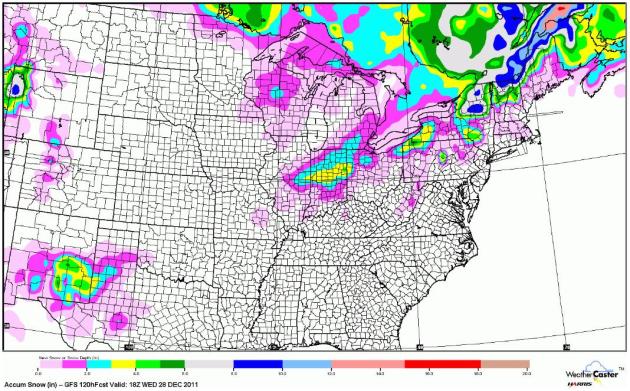 Predicted Snow Through Midday Wednesday
Predicted Snow Through Midday Wednesday. Still no significant snow for the Upper Midwest, although Indianapolis may pick up a couple inches, along with upstate New York and northern New England. That's pretty much it looking out 120 hours (GFS model).
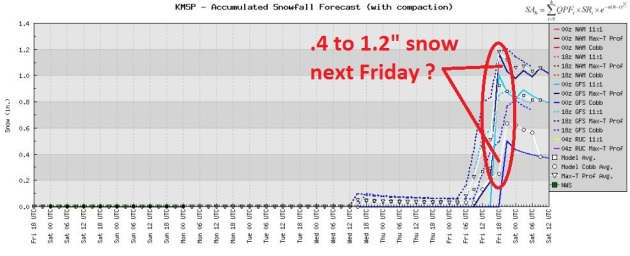 No Snow Through Next Thursday.
No Snow Through Next Thursday. What a shock, huh? Models are hinting at a half inch or inch of snow next Friday. Kind of like living in Little Rock or Memphis.
Snowy New Mexico. While we deal with a brown Christmas, there is PLENTY of snow from Arizona and New Mexico into Colorado and Kansas. Here's an update on major road closures due to continued blowing and drifting:
Interstate 10 is closed in Southwest NM, from Las Cruces to close to the AZ state line (just over 100 miles)
Interstate 25 is closed in southern New Mexico, from Las Cruces to Socorro (about 100 miles)
Interstate 40 is closed in western New Mexico, from Gallup to Grants
Interstate 40 is also closed in eastern New Mexico, from east of Albuquerque to Tucumcari.
* Data courtesy of Earth Networks. I can't remember the last time I heard of I-10 closing due to snow. That's close to the Mexican border!
Photo credit above: "This Wednesday, Dec. 21, 2011 photo provided by New Mexico Search And Rescue shows the Higgins family's SUV buried under a snowdrift on U.S. Highway 412 about 30 miles from Clayton, N.M., when a blizzard moved through the area Monday. Rescuers had to dig through 4 feet of ice and snow to free David and Yvonne Higgins and their 5-year-old daughter, Hannah, who were found clinging to each other early Wednesday. The family had plenty of water to drink, plus sandwiches and chips. But as the hours passed, it seems as if they were working harder to breathe inside the buried SUV. (AP Photo/New Mexico Search And Rescue)"
Earth At The Winter Solstice. From
NOAA: "
Taken on December 22, 2011, this full hemisphere scan from the GOES East satellite shows Earth on the 2011 winter solstice. The solstice is the shortest day of the year, and is also notable because the Sun's angle relative to the planet is at its most southern point, leaving the North Pole in darkness. The high angle is evident in this image, were no visible cloud imagery can be seen over the North Pole, whereas the South Pole is well lit. Clouds are actually present over the North Pole (and would be visible in infrared imagery), however the visible imager sensor on GOES requires sunlight to capture imagery - and there is no sunlight at the high latitudes."
Top 10 Weather Stories Of 2011: From Manitoba Flooding To Goderich's Tornado. Environment Canada discusses the most significant weather events of '11 for our neighbors to the north in this
CBC article: "
Snowstorms, floods, hurricanes and tornadoes — Canada bore the brunt of all these weather systems during 2011, and Environment Canada's Dave Phillips has also included them in the top 10 weather stories of the year. Phillips told reporters during a conference call on Thursday that while Canadians had plenty to weather in 2011, they were remarkably unscathed compared to their global neighbours. But weather-related losses were pegged at $1 billion by the insurance industry, making it the second most expensive year for Canadian weather catastrophes.
1. Historic flood fights in the West
The floods resulted in more acreage under water than ever recorded, lasting from October 2010 to late July and featured the highest water levels and flows in modern history across parts of Manitoba and Saskatchewan. Governments spent $1 billion on flood fighting and victim compensation."
NASA - WISE Presents A Cosmic Wreath. Here are some details behind this breathtaking image, courtesy of NASA: "
Just in time for the holidays, astronomers have come across a new image from NASA’s Wide-field Infrared Survey Explorer, or WISE, that some say resembles a wreath. You might even think of the red dust cloud as a cheery red bow, and the bluish-white stars as silver bells. This star-forming nebula is named Barnard 3. Baby stars are being born throughout the dusty region, while the “silver bell” stars are located both in front of, and behind, the nebula."
Comet Lovejoy From Orbit. Here's more information (and a spectacular video) from
spaceweather.com: "
Veteran astronaut Dan Burbank has seen many amazing things. Once, he even flew through the aurora borealis. So when Burbank says "[Comet Lovejoy] is the most amazing thing I have ever seen in space," it really means something. Currently serving onboard the International Space Station, Burbank photographed the sungrazing comet on Dec. 21st, an experience he describes in this NASA video."
 11 Groundbreaking Inventions Of 2011
11 Groundbreaking Inventions Of 2011. I'm a geek, I admit it, and as such always on the lookout for amazing tech.
Business Insider takes a look at some of the more promising technological breakthroughs of this past year.
Medical Mirror" Takes Your Pulse By Analyzing Your Face.
Inventor: Ming Zher Poh, Massachusetts Institute of Technology graduate student
What is it? "
Did you know you could measure your heart rate through your face? If you did, you're probably a graduate student at MIT. Poh's mirror, using a web cam behind the glass, measures the amount of light your face is reflecting and uses it to calculate your heartbeat."
* photo above courtesy of MIT.
 iTV or Apple TV3: A Perfect TV Set? The Perfection Paradox
iTV or Apple TV3: A Perfect TV Set? The Perfection Paradox web site takes a look at what Apple may be planning for next generation TV sets. Simplicity is key - make it EASY
for me to find my favorite show, no fumbling for remotes or channel guides. Voice-controlled, streamlined, elegant and so easy a 4 year old can use it: "
Can Steve Jobs and Apple reinvent the TV set and bring it closer to perfection, just as he helped perfect the tablet computer, the phone and the music player? From the recent revelations in the Steve Jobs' biography and articles in the Wall Street Journal, as well as leaks from suppliers in Japan and Australia, the rumor mill is pounding the drums. Below are my own speculations about what the Apple TV set will be like, based on taking seriously Steve Jobs' obsession with perfection."
 Why Everyone Hates The Media
Why Everyone Hates The Media.
Salon takes a look at America's growing distrust and dislike of traditional media outlets: "
The cover of Jonathan M. Ladd’s new book shows a pair of newspaper vending boxes that have been vandalized. “Lies,” reads the graffiti scrawled across the machines. Lots of people seem to agree with the sentiment expressed by this anonymous street-level press critic — even if most of us are more apt to express this by screaming at the TV. In his meticulous and informative “Why Americans Hate the Media and How It Matters,” Ladd cites a 1956 study that “found that 66 percent of Americans thought newspapers were fair.” Within 50 years, things would change dramatically. By 2004, he writes, “only 10 percent of Americans had ‘a great deal’ of confidence in the ‘national news media,’” according to one poll."

"
He who has not Christmas in his heart will never find it under a tree." - Roy L. Smith
Tracking Santa
Any interest in a gently-used, barely-been-touched snowblower? Yep, that was a good investment. Useless trivia: we've picked up just over 8" snow so far this winter season. We should have seen over 18". Duluth has 1" on the ground - northern Minnesota has less snow than the previous brown Christmas, 2006.
I can gauge the severity of a winter by my garage. The more sand and gunk, the tougher the winter. This year it's pretty much crud-free. The stakes in my driveway are mocking me. Tough times for anyone with a snowplow.
I wish I could promise snow for Christmas, but it's a longshot at best. Our only saving grace: another fast-moving clipper diving southward out of Manitoba could whip up a light dusting of snow by Christmas morning, but it probably won't be the 1"+ necessary for a "white Christmas". At least weather will cooperate with travel plans and last-minute dashes to the mall. 40 is not out of the question today, again Monday of next week - almost 20 degrees warmer than average. A mild Pacific wind keeps us storm-free into early January.
Welcome to the 8th brown Christmas since '67 for the metro. I'm just the messenger. Christmas is wondrous - with or without snow.
Climate Stories....
The Year In Weather: It Was A Disaster. The Atlantic has a good recap of what was an extraordinary year for meteorologists. To be honest, I saw things I never thought I would see in my career, everything from an 82 dew point at MSP (84 in between hours), to a heat index topping 130 in Grand Forks, a flood on the Missouri that lasted much of the year, the worst drought since the Dust Bowl Days for Texas, massive sandstorms ("haboobs") from Arizona to Texas, and hundreds dead in a single day from tornadoes - at one point more than a dozen tornadoes were on the ground simultaneously. Surreal: "
A once-in-five-hundred-year flood inundated the Mississippi River valley. A once-in-a-century drought in Texas shriveled the summer's crops and sparked sweeping forest fires. The deadliest tornado season on record tore communities to splinters. 2011 was clearly a year of extreme weather. Perhaps it is a sign of the pending 2012 apocalypse, but more likely, it is the result of a changing climate that is amplifying extremes. The chart above marks more than 2,900 separate weather records broken this year, and these records were costly. In all, Mother Nature inflicted $52 billion dollars in damage on the United States."
Public Attitudes Toward Climate Change Across Countries. Here's an interesting story from
celsias.com: "
So it's interesting to look at how these views affected country attitudes at Durban recently. It is pertinent to mention here that Asia has been worst hit by severe climate change. Pakistan is one of the countries that have been severely hit in the recent years by disastrous effects of climate change including flash floods and devastating earthquakes. “Developed nations are not guilty of causing the climate change that developing nations claim they are suffering,” said Tom Harris, executive director of ICSC which is headquartered in Ottawa, Canada. “Climate changes all the time—both warming and cooling—due to natural causes and there is nothing that we can do to stop it. However, to the degree possible, and considering our economic circumstances, developed nations still have a moral obligation to devote a proportion of their foreign aid to helping the world’s most vulnerable people adapt to natural climate events.”
Floods, Heat, Migration: How Extreme Weather Will Transform Cities.
CNN has the story: "
When Tropical Storm Washi ripped through the southern Philippine city of Cagayan de Oro last weekend, it dumped in one day more than the city's entire average rainfall for the month of December. According to the Philippine Atmospheric, Geophysical and Astronomical Services Administration, a total of 181 millimeters of rainfall was recorded in the area last Friday, compared to the expected 99.9 millimeters for the whole month. The devastating flash floods, which have so far claimed the lives of more than 1,000 people, arrived just weeks after a report from the UK's Met Office Hadley Centre for Climate Change indicated that climate change has significantly increased the number of people at risk from flooding globally."



